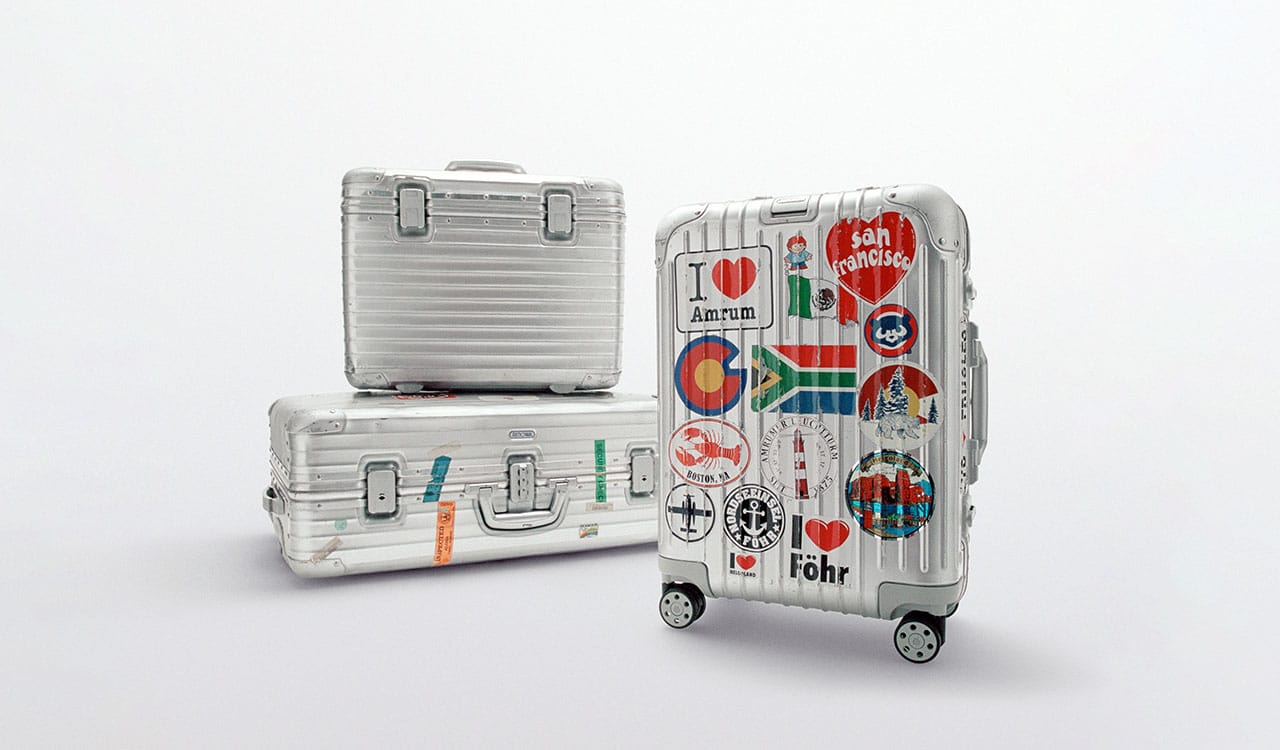Don’t mistake pauses, blinks and exceptions for progress in Trump’s global guerilla trade war. While retailers in some categories are starting to feel a reprieve as the administration grants exceptions and ‘does deals’ with individual countries and companies, there remains little hope of a cohesive and transparent global trade policy emerging anytime soon. The U.S. China trade war is real and present. Shipments from Asia and elsewhere to the U.S. are still largely on hold, as suppliers and buyers alike bide their time hoping Trump’s inconstancy will end.
Crippling tariffs are triggering some suspicious workarounds. The Korean Customs Service recently announced the discovery of over $20 million in goods from China masquerading as Korean exports destined for the U.S. in a stepped-up effort to comply with American Country of Origin requirements. Indonesia is revisiting plans to impose triple-digit tariffs on textiles and other Chinese goods, as many suspect China of using Indonesia as a re-export hub to avoid U.S. tariffs.
Backlogging and Logjamming
The resulting disruptions are already creating massive logjams in the global supply chain. If they are not unblocked in the next few months, retailers will be facing bare shelves (and ecommerce fulfillment centers) come back-to-school and Christmas sales runways, and producers, sources and brands will attempt to push off the tariff-induced cost risks onto each other. Pricing strategies are in complete disarray as a result of this wait-and-see game, which may actually hasten the arrival of the recession producers and retailers on both sides of the Pacific fear.
American brands and retailers prefer consistency in their market outlook, particularly in these months running up to the all-important holiday season. While future consumer demand is never absolutely knowable, sales forecasting and production planning can tamp down uncertainty and keep shipments flowing. This is simply not possible today. Neither just-in-time production processes nor sales analytics tools will overcome the complete uncertainty of the Trump administration’s capricious and piecemeal trade policy.
History as Prelude
For roughly a half-century since Walmart established its first Asian buying office in Hong Kong, U.S. brands and retailers have relied on shipments from China and elsewhere in Asia as well-organized sourcing supply chains. These manufacturers ship the majority of goods needed to fill shelves (or fulfillment centers) for the annual back-to-school and holiday shopping seasons between May and August.
“I would expect most everyone’s major shipping season to be between July and September to catch Christmas sales,” says the Hong Kong-based sourcing manager of a consumer electronics firm. There is some flexibility, though: “It’s all a bit fluid depending on the final destination and any year’s one-off problems: such as strikes, weather events, or conflicts.” She believes nearly everyone needs to get their products into containers and onto ships by October at the latest. “Retailers really under the gun can also choose to air freight, which can be done as late as November and still make to by the holidays.”
Made Somewhere Else
As we’ve reported, the assertion that the U.S. is ‘losing’ to China and its other global trade partners is hard to justify, and much economic data suggests that outsourcing production has only enriched America. Since 1981, U.S. GDP has grown ninefold, and its non-food retail markets ($6.3 trillion in 2024) are more than a dozen times larger than they were when Walmart established its first Asian outpost. Manufacturing jobs have decreased by 35 percent since 1981 and non-college-educated workers have experienced wage stagnation, but this has been the plight of blue-collar workers since the 1940s, decades before American factory jobs were ‘lost’ to cheaper destinations.
The reshoring of manufacturing will not reverse this trend, even if it were the actual endgame of Trump’s tariff-based trade war. This is, in the view of suppliers, because very little relevant manufacturing capacity exists today. “No one is making our stuff in the U.S.,” says one supplier of gifts and homeware to big box retailers which sources from China and other Asian markets, with the exception of one item: “a simple plastic bucket.”
This supplier’s decades long business has survived innumerable supply and demand shocks over the years, but the last month has been a particularly unanticipated form of chaos. “The initial (China tariffs) were disruptive and landed on us after we had received orders for shipping to meet the back-to-school and holiday seasons. It took us weeks working with customers, adjusting their prices down and negotiating with factories…all sides tightened margins, a lot of items would see price rises, some purchase quantities were cut, and some items eliminated.” He reckons that Trump’s first salvo reduced orders by eight to 12 percent of his clients’ original commitments.
The 145 Percent Rule
All this hard work was for naught when the proposed U.S. tariffs on Chinese goods went up to 145 percent or more. “In the weeks since the pause, reality has set in. Both sides have dug their heels in.” The ‘pause’ caused an expected chain reaction: “Goods at forwarders have been returned or turned back and are winding up at the production facilities. The pause in shipping has caused an almost complete stop in production, and facilities are reluctant to take on the risk.” As the weeks pass, he fears the window for shipping for the upcoming seasons is closing “and when and if tariffs are ‘finally’ reduced and (producers) open back up, all hell will break loose to get production done and get goods out.”
Several sources have told The Robin Report that the majority of their China-based factories have had all their orders to U.S. clients orders fully stopped, “Some on hold by their customers, some lack the confidence, some also said their warehouse already full of goods due to the pause status which they need to stop production to avoid more similar situations.”
Hope Springs Eternal
This is beginning to change. “This week there is some hope in the air that he’ll lower tariffs so we can get on with summer orders and production,” says the Hong Kong-based sourcing manager. Trump continues to dole out carveouts and exemptions to those that seem to have his ear on bended knee, or for strategic industries such as the automotive sector. Trump has reportedly allowed U.S. car makers to claim reimbursements on imported parts and materials (including all-important aluminum) for vehicles assembled in the U.S., thanks to intensive lobbying.
Workarounds
News that Walmart and other big box players have put the word out to suppliers to resume some trans-Pacific shipments have sourcing agents and shippers in Asia believing that the big bosses of American retail have also worked out an arrangement with the Trump administration. Apple’s recent announcement that it will completely shift iPhone assembly away from China to India could also be interpreted as a concession to the U.S. government (Trump excused smartphones and other electronics from additional tariffs on April 11.) Even if Apple is moving factory jobs to India and not America, they are still moving them out of China.
Asian countries themselves are also trying to demonstrate their willingness to make deals with the U.S. Some of these efforts predated Liberation Day: In March, Vietnam announced plans to reduce tariffs on U.S. imports and purchase more from America, including Elon Musk’s StarLink satellite internet service, a huge concession for a country which has some of the most restrictive internet access laws in the world.
The threat of crippling tariffs is triggering creative workarounds. The Korean Customs Service recently announced the discovery of over $20 million in goods from China masquerading as Korean exports destined for the U.S. in a stepped-up effort to comply with American Country of Origin requirements. Indonesia is revisiting plans to impose triple-digit tariffs on textiles and other Chinese goods, as many suspect China of using Indonesia as a re-export hub to avoid U.S. tariffs.
All these scattered deals are fueled by desperation and brinkmanship in the run-up to looming tariffs and are not seen as parts of a comprehensive trade policy by industry participants. “Uncertainty prevails,” says an auto parts supplier, who believes that even firms that are benefitting from Trump’s sporadic acts of largess cannot effectively plan for the future. “Things seem to be getting better, but what the automotive sector needs to hear is that the decisions made will be held to and not changed on a whim.”
China’s Role
Most important, however, is the fact that the key player—China—has seemingly refused to join in the Trump dealmaking discussions. This has naturally infuriated Trump and set in motion tit-for-tat new tariffs and trade restrictions. Neither Trump nor Xi seems keen to be viewed as backing down. However, resolve seems to be steadily weakening on both sides, as seen in the endless stream of exemptions from the U.S. Equally, China has discovered that it cannot live without Boeing aircraft in the same way Trump found it impossible to deprive Americans of their iPhones.
This likely means that a wobbly path back towards ‘normal’ trade relations is being plotted in the backrooms of Beijing and Washington. It is not being done ‘normally,’ through orderly and transparent bilateral discussions. Nor are concessions being implemented in any comprehensive way, leaving every business and trading partner to fend for themselves. As a result, the critical shipment weeks before Christmas are going to be wasted all along the global supply chain, each part fearful of getting stuck holding the tariff bag if and when it gets delivered. Contingency planning for supply outages, and revising margins as low as can be endured, will, unfortunately, be every brand’s only recourse this holiday season.





